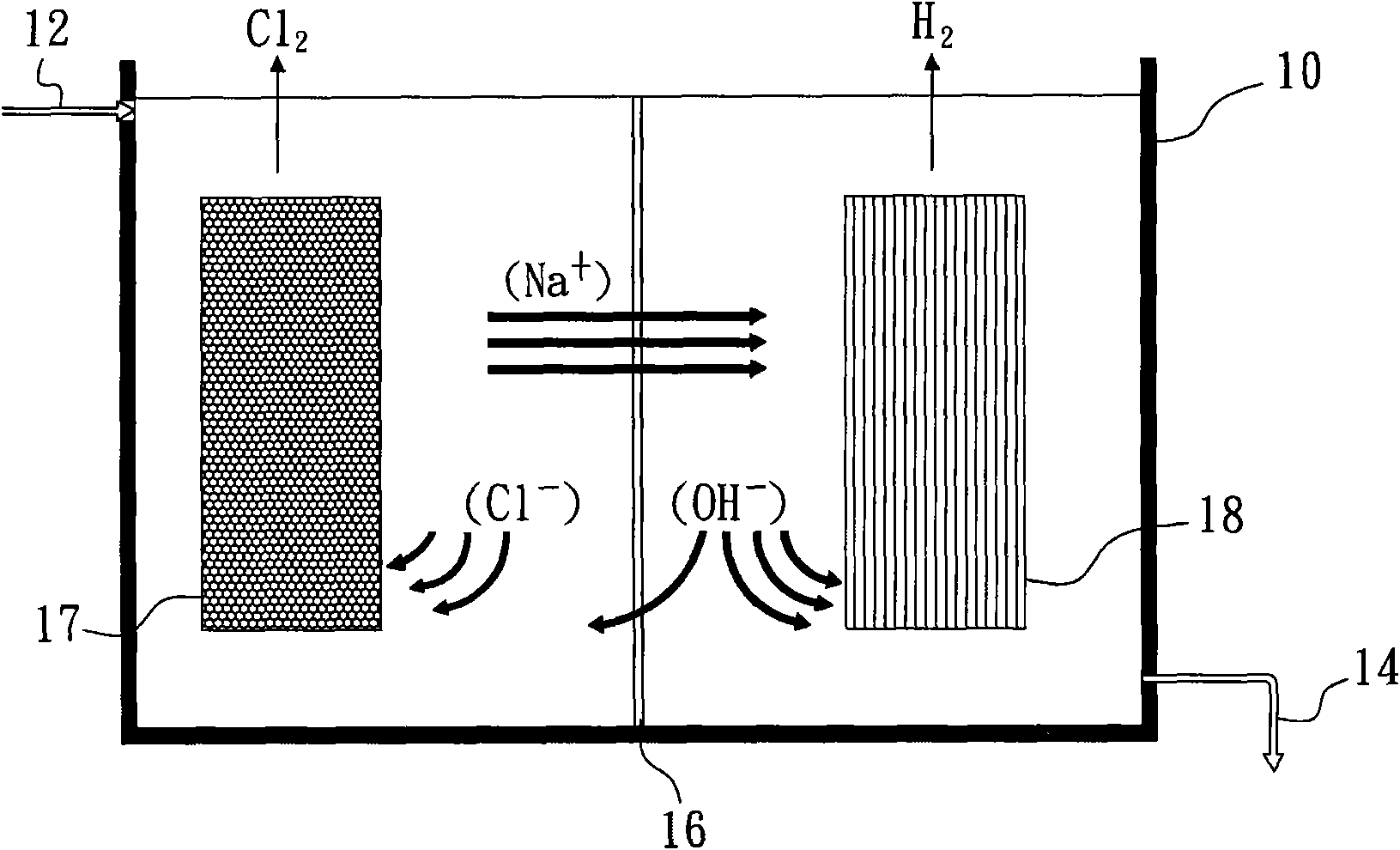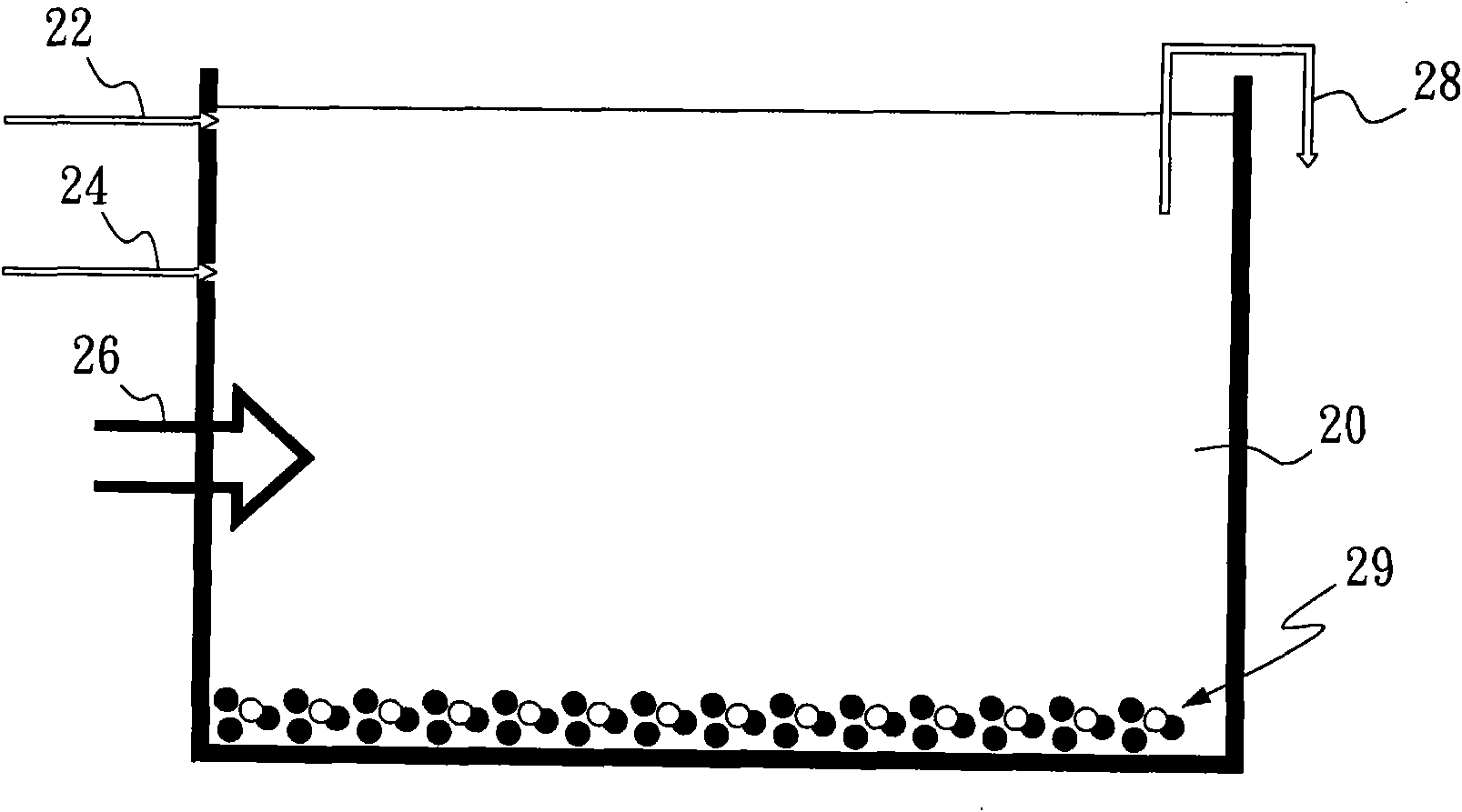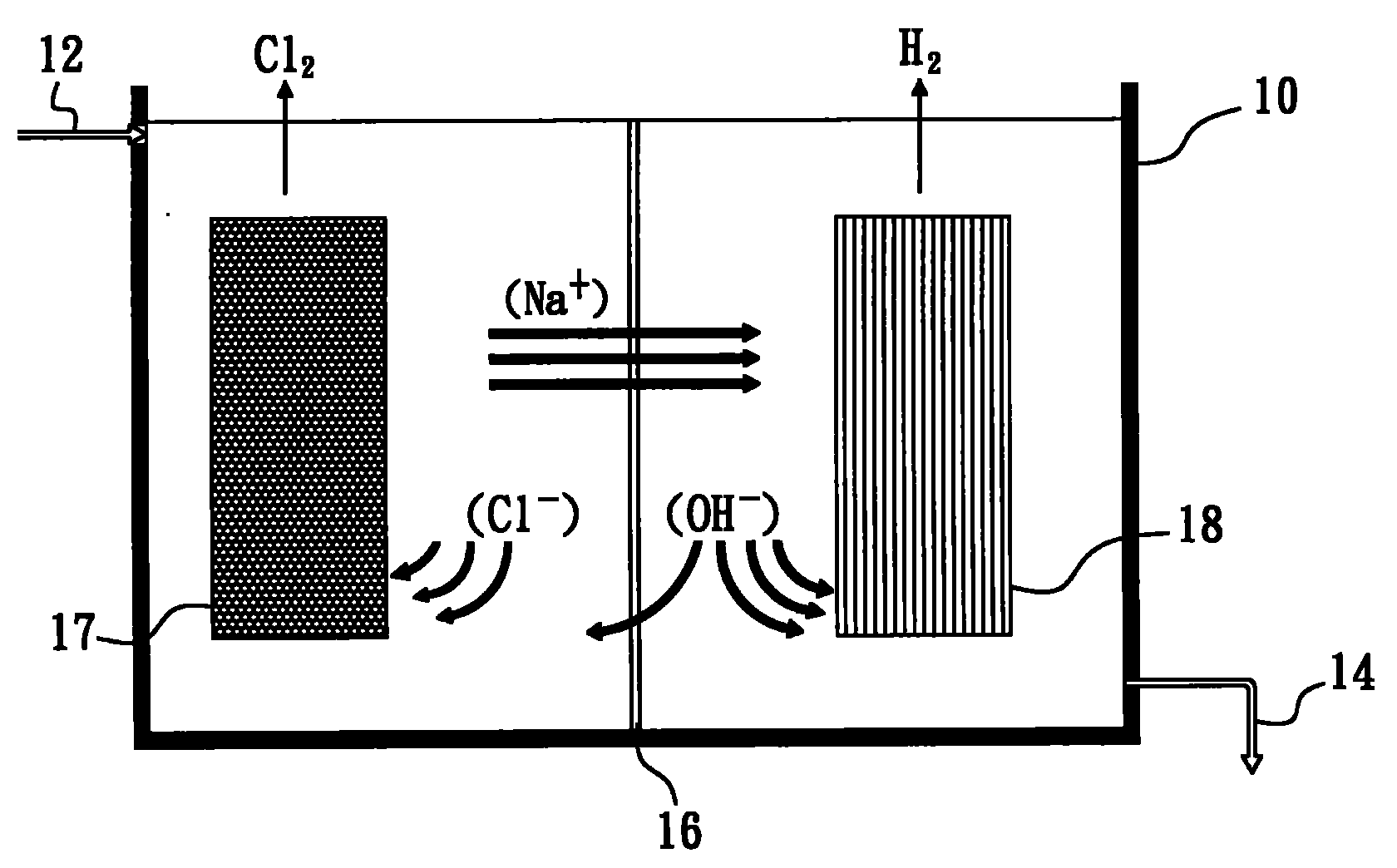Method for trapping carbon dioxide
A carbon dioxide, sodium hydroxide technology, applied in chemical instruments and methods, separation methods, inorganic chemistry and other directions, can solve problems such as inconvenience, and achieve the effect of easy and safe storage
- Summary
- Abstract
- Description
- Claims
- Application Information
AI Technical Summary
Problems solved by technology
Method used
Image
Examples
preparation example Construction
[0052] Among them, in the preparation of sodium hydroxide (NaOH), the sodium hydroxide is a by-product of the process of generating chlorine gas for industry. The common practice is to electrolyze saturated salt water until all the chlorine elements become chlorine gas and escape, and stay in the solution at this time. There is only sodium hydroxide as a solute, and the reaction equation is:
[0053] 2NaCl+2H 2 O→2NaOH+Cl 2 +H 2
[0054] Sodium hydroxide, the reactant required in the carbon dioxide capture method of the present invention, can be produced by electrolyzing saturated salt water, wherein the saturated salt water can be obtained from waste products after seawater desalination.
[0055] Early seawater desalination was concentrated in the dry Middle East, and now with the rapid development of industry and commerce, coupled with the gradual increase in population, the whole world needs a lot of water. Today, it is increasingly difficult to develop water sources, an...
Embodiment 1
[0074] Preparation of Sodium Hydroxide (NaOH)
[0075] see figure 1 As shown, the saturated salt water or brine (Brine) is introduced in a continuous manner to keep the electrolysis reaction going on continuously, and sodium hydroxide (NaOH) solution can be obtained continuously, wherein in an electrolytic cell 10, a stable electric current 40 Ampere (A), and potential control greater than 1.5 volts (V), and an ion exchange membrane 16 is set at the center of the electrolytic cell 10, and brine is introduced at the inlet 12, and the bittern flows through the electrolytic cell 10, in The reaction of the anode 17 of the electrolyzer is: 2Cl-→Cl 2 +2e-, chlorine gas produced by electrolysis is released from the anode; while the reaction at the cathode 18 of the electrolytic cell is: 2H 2 O+2e-→2OH-+H 2 , Electrolysis produces hydrogen gas from the cathode, and the sodium ions (Na+) in the solution combine with hydroxide ions (OH-) to form sodium hydroxide solution (NaOH(aq)) a...
PUM
 Login to View More
Login to View More Abstract
Description
Claims
Application Information
 Login to View More
Login to View More - R&D
- Intellectual Property
- Life Sciences
- Materials
- Tech Scout
- Unparalleled Data Quality
- Higher Quality Content
- 60% Fewer Hallucinations
Browse by: Latest US Patents, China's latest patents, Technical Efficacy Thesaurus, Application Domain, Technology Topic, Popular Technical Reports.
© 2025 PatSnap. All rights reserved.Legal|Privacy policy|Modern Slavery Act Transparency Statement|Sitemap|About US| Contact US: help@patsnap.com



